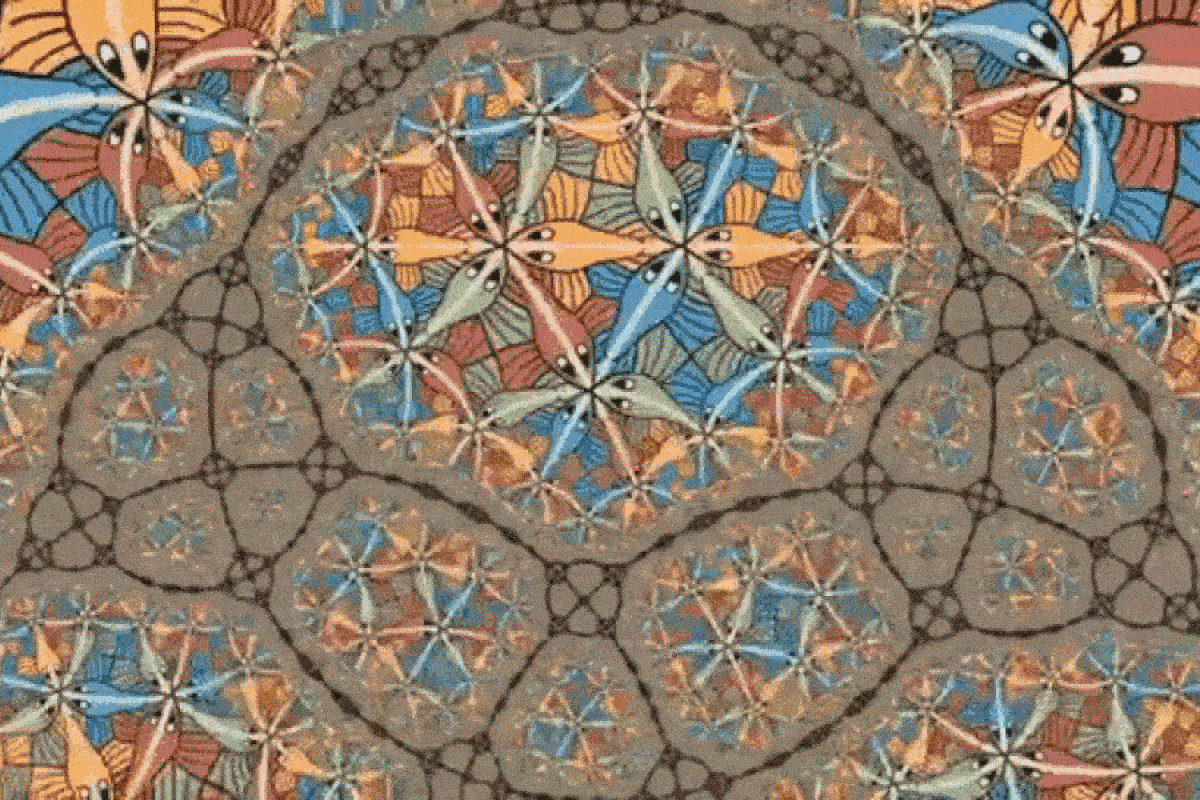


Editorial
Editorial

Fractal Circle Limit III, by permission of the artist Vladimir Bulatov.
We do live in strange times. Just when COVID-19 seemed to be getting under control, along comes Omicron to foul up any arrangements we had planned for the next few weeks. Let’s hope that this variant turns out not to be as harmful as the others.
We have some recent changes to the Editorial Board of the IUCr Newsletter. Regional Editors Ted Baker and Serena Chiara Tarantino have both retired from the Board, and I thank them very much for their support. At the same time, we welcome some new members of the Board:
- Chris Sumby (Asia including Australia, New Zealand, and Pacific Island Territories)
- Anders Madsen (Europe including Russia and the Middle East)
- Panče Naumov (Europe including Russia and the Middle East)
The complete list of Editors can be seen at https://www.iucr.org/news/newsletter/editorial-board. Please contact them or any other member of the Editorial Board with news and information that we can publish in the Newsletter.
We also bid a fond farewell to Patti Potter, who is standing down from the Newsletter after having worked on the publication since its launch in 1993. Originally based in Buffalo, Patti was employed as the Production Manager alongside Editors Bill Duax and Judy Flippen-Anderson, and then, when production moved to Chester in 2018, continued in advertising sales. We thank Patti for her role in disseminating news to the crystallographic community for 28 years, and send our best wishes for the future.
The IUCr, initially proposed by P. P. Ewald in 1944 (see https://www.iucr.org/iucr/history/early-history), has represented the crystallographic community throughout the world since its founding in 1947. In its first international meeting in 1948, participants came from Belgium, Canada, France, Germany, India, Italy, Netherlands, Spain, Sweden, UK and USA. In the intervening years, we have seen the IUCr promote the growth of crystallography further around the world. In most countries, national crystallographic associations were founded, followed by supranational bodies such as the American Crystallographic Association (representing the USA and Canada), the European Crystallographic Association, the Asian Crystallographic Association and then later, the Latin American Crystallographic Association. This left a noticeable gap (are there any crystallographers in Antarctica?), which has been filled, finally, with the foundation of the African Crystallographic Association (AfCA) – read all about the launch from the AfCA Executive Committee here. The African crystallographers are to be applauded for reaching this momentous step and are welcome members of our community. To reach this point has taken much hard work by stalwarts such as Claude Lecomte and Michele Zema, with support from the IUCr through its various schemes, such as OpenLabs, together with a number of commercial companies who have donated equipment to some African countries.
Also of note is the recent rise of crystallographic research in the Arab world. Panče Naumov, Sharmarke Mohamed, Liang Li and Wael Rabeh tell us about this research here. The Emirates Crystallographic Society was set up and is now an adhering body of the IUCr. Another example of the widespread crystallography community can be seen here, where we have an article about crystallography in Guatemala, which also became a member of the IUCr in 2021.
I am looking forward to the next IUCr Congress, which will be held in Melbourne, Australia, in 2023. I hope that we shall all be able to attend in person by then. Australia is such an exciting country, with strange animals and plants, and I have always enjoyed visiting. Now, how about an Australian walk-about? Chris Sumby suggests a road trip with stops at places that should be of interest to crystallographers. Looks great!
To mark the inauguration of the new Sir William Henry Bragg Building at the University of Leeds, a major exhibition devoted to the work of W. H. Bragg, the father of Sir William Lawrence Bragg, is currently under way. As every crystallographer surely knows, both father and son shared the 1915 Nobel Prize in Physics for their work on crystal structure determination by X-ray diffraction. You can read about the exhibition here.
Another of our Nobel Laureates, Herbert Hauptman, is featured in an article by Istvan Hargittai, focussing on his creation of stained glass polyhedral models with close packing of spheres. Istvan includes a brief biographical sketch.
All crystallographers who publish crystal structures, and that is no doubt the majority, are well used to creating the infamous CIF, which I always called the Crystallographic Information File. I now see from the fascinating article by James Hester and Brian McMahon that CIF stands for “Crystallographic Information Framework”! James and Brian relate the history of this all-important development that has become so standard in the lives of most crystallographers. I remember when the CIF all started but had forgotten how many people had involvement in its creation.
Finally, The Royal Society has just published a biographical memoir on Nobel Laureate Tom Steitz here written by Venki Ramakrishnan and Richard Henderson.
Copyright © - All Rights Reserved - International Union of Crystallography








